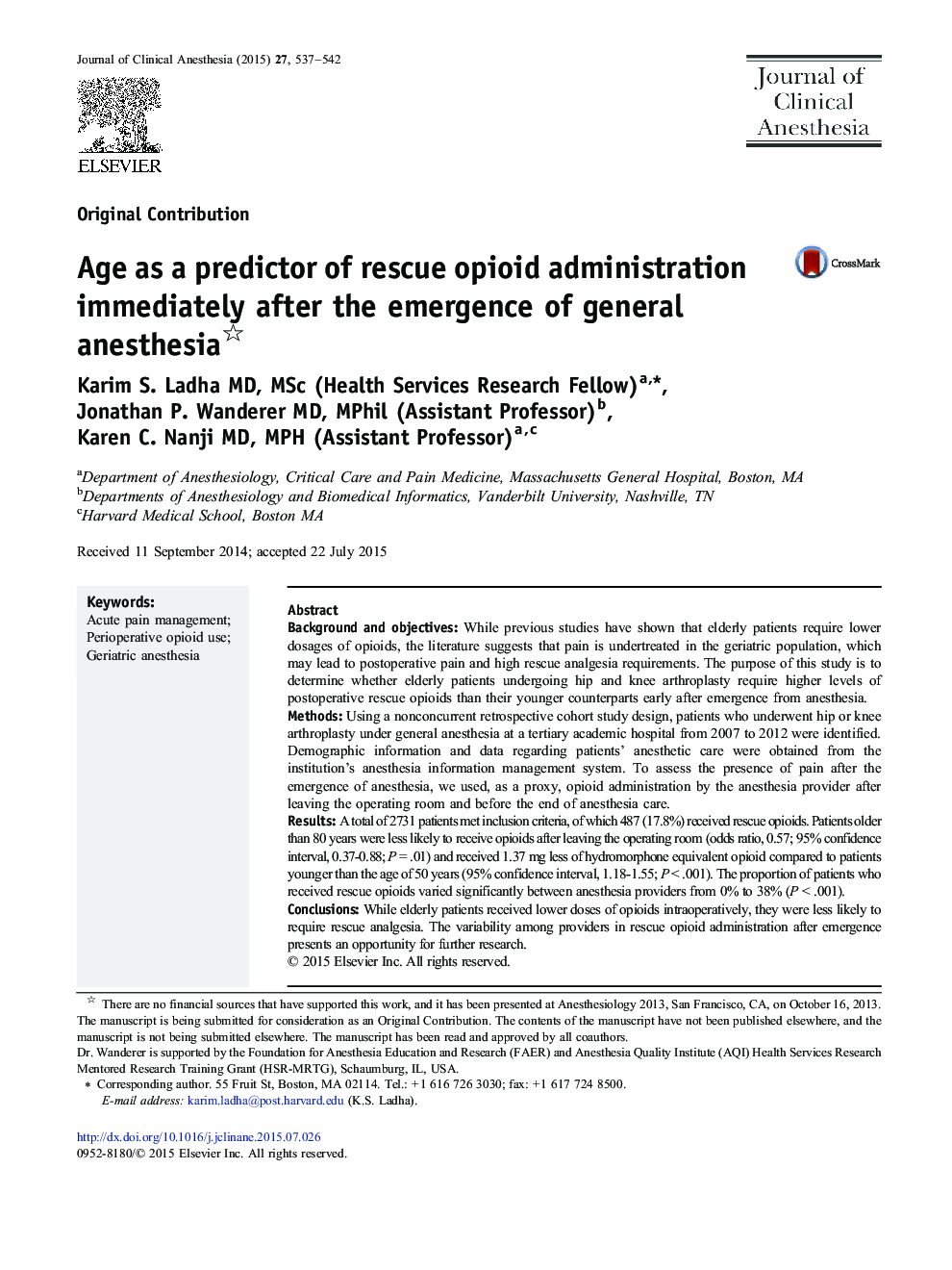| Article ID | Journal | Published Year | Pages | File Type |
|---|---|---|---|---|
| 2762488 | Journal of Clinical Anesthesia | 2015 | 6 Pages |
•Examined whether elderly patients require more postoperative rescue opioids.•A total of 2731 patients met inclusion criteria, of which 487 (17.8%) received rescue opioids.•Older patients were less likely to receive opioids after leaving the operating room.•Proportion of patients receiving rescue opioids varied between providers.
Background and objectivesWhile previous studies have shown that elderly patients require lower dosages of opioids, the literature suggests that pain is undertreated in the geriatric population, which may lead to postoperative pain and high rescue analgesia requirements. The purpose of this study is to determine whether elderly patients undergoing hip and knee arthroplasty require higher levels of postoperative rescue opioids than their younger counterparts early after emergence from anesthesia.MethodsUsing a nonconcurrent retrospective cohort study design, patients who underwent hip or knee arthroplasty under general anesthesia at a tertiary academic hospital from 2007 to 2012 were identified. Demographic information and data regarding patients' anesthetic care were obtained from the institution's anesthesia information management system. To assess the presence of pain after the emergence of anesthesia, we used, as a proxy, opioid administration by the anesthesia provider after leaving the operating room and before the end of anesthesia care.ResultsA total of 2731 patients met inclusion criteria, of which 487 (17.8%) received rescue opioids. Patients older than 80 years were less likely to receive opioids after leaving the operating room (odds ratio, 0.57; 95% confidence interval, 0.37-0.88; P = .01) and received 1.37 mg less of hydromorphone equivalent opioid compared to patients younger than the age of 50 years (95% confidence interval, 1.18-1.55; P < .001). The proportion of patients who received rescue opioids varied significantly between anesthesia providers from 0% to 38% (P < .001).ConclusionsWhile elderly patients received lower doses of opioids intraoperatively, they were less likely to require rescue analgesia. The variability among providers in rescue opioid administration after emergence presents an opportunity for further research.
